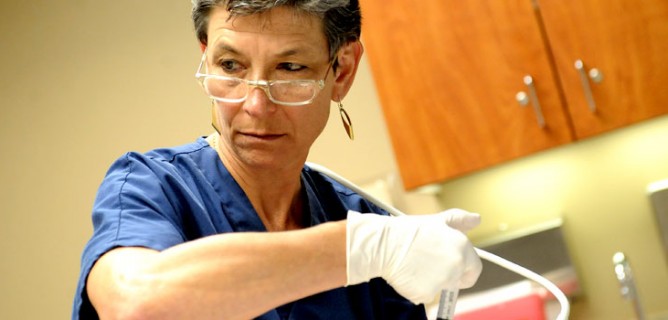By Annette “Dr. Z” Zaharoff, M.D.
New York Yankees pitcher Aroldis Chapman was placed on the disabled list on Aug. 22 after being diagnosed with tendinitis in the left knee. On Sept. 19, less than a month later, the team reactivated him.
Chapman, an All-Star closer, was treated with Platelet-rich Plasma (PRP) Injections, a Regenerative Injection Treatment.
Stories like this regularly make the news, but despite the mounting anecdotal evidence, some researchers cast doubt on the efficacy of PRP Injections.
First a quick refresher: PRP Injections are derived from a patient’s own blood. The blood is placed in a centrifuge programmed to spin the blood at certain rpm’s. The platelet cells are separated from the red and white blood cells to concentrate the platelets. The PRP mixture is then injected into an injured area such as a knee, elbow, low back or shoulder. This concentration helps promote healing of torn ligaments, injured tendons, joints and other musculoskeletal problems.
The results are often amazing. Professional athletes such as Tiger Woods and Kobe Bryant — who could have had to undergo season-ending surgeries for back, knees, elbows or shoulders — have turned to PRP injections to avoid surgery and return to playing form with less downtime. Some orthopedic surgeons even incorporate PRP injections into the post-rehabilitation routine for patients after surgery to help speed along the healing process.
There is mounting evidence that backs up the results. A 2017 meta-analysis of 18 studies looked at the effectiveness of PRP injections versus control treatments such as corticosteroids, dry needling and saline in treating tendinopathy. The Australian researchers looked at outcomes based on pain ratings for 1,066 patients at 12 weeks following treatment, and with 6-month to 12-month follow-ups when possible.
The study, published in The American Journal of Sports Medicine, concludes: “There is good evidence to support the use of a single injection of LR-PRP under ultrasound guidance in tendinopathy. Both the preparation and intratendinous injection technique of PRP appear to be of great clinical significance.”
Translation – The authors believe that the evidence shows PRP injections can help patients with tendinopathy to recover.
Yet there are clinicians and researchers who still cast doubt on the effectiveness of this form of Regenerative Medicine. The “British Journal of Sports Medicine” published an article about a research project that did a double-blind study on hamstring tears. Patients were administered either PRP injections or a placebo (a non-effective injection such as simple saline). They reported there was no difference in healing time between patients regardless of whether they received PRP or the placebo.
I can say from personal experience, and from the scientific literature, that this outcome doesn’t make sense. I have had patients experience much success with PRP injections. And I am not the only one who has doubts about this study.
Dr. Lewis Maharam is a noted sports medicine expert and past medical director for the NYC Marathon. He writes a column for the New York Daily News called “The Running Doc.” He recently took issue with the study and delved a little deeper into the methodology.
Dr. Maharam noted that he has had amazing success with PRP Injections for patients particularly for helping hamstring tears to heal quickly. Regenerative Injection Treatments are often more effective when paired with a good physical therapy routine.
Yet Dr. Maharam discovered that the researchers cited in the “British Journal of Sports Medicine” started physical therapy within a day of the injection, whether it was for a PRP Injection or a placebo. Why does that matter? Because, like all Regenerative Injection Treatments, PRP injections need a few weeks to months for the healing properties of the platelet-rich plasma to take effect.
This also may explain why there are conflicting accounts as to the success of PRP injections, Stem Cell injections and Prolotherapy injections. I both teach and attend training seminars on the most effective way to utilize these injection therapies. Experience matters when it comes to receiving these types of treatments.
Regenerative Injection Treatments – which are non-narcotic, non-addictive and require no hospital stays – can revolutionize the way physical medicine is delivered in this country.
There are more studies on the way, many of which are looking at the efficacy of PRP and other Regenerative Injection Treatments on specific injuries in specific areas of the body. The evidence backing the positive results practitioners like Dr. Maharam and I have experienced is out there. It’s just a matter of time before the rest of the field catches up and makes Regenerative injections a regular clinical solution.
Until then, we’ll keep pushing for good science, and for good outcomes.
Dr. Annette “Dr. Z” Zaharoff heads the Non-Surgical Center of Texas, focusing on non-surgical treatments to relieve pain and repair injuries. A former professional tennis player who competed on the WTA circuit, Dr. Zaharoff has been utilizing regenerative injection treatments including Stem Cell Therapy, PRP Injection Therapy and Prolotherapy for more than a decade. Learn more about her at www.drzmd.com. You can follow her on Facebook at www.Facebook.com/DrZaharoff.

